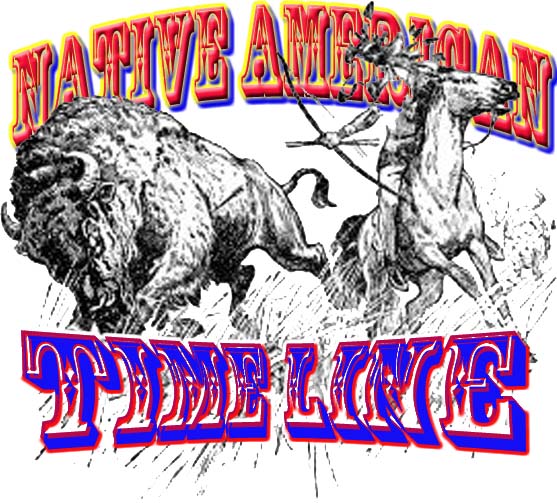1890
Lands that were promised by the US government to be held exclusively for Native Americans that were removed by force from the east, are established as the Oklahoma Territory and open to white settlement breaking a 60-year-old pledge.
A letter written by Charles L. Hyde to the Secretary of the Interior caused the US government to be concerned and fearful about allowing the Sioux to partake in the Ghost Dance, which they now thought might lead to a major uprising of the tribes.
For teaching the visionary ceremony foretelling the disappearance of all white people, the “Ghost Dance,” Kicking Bear was removed by force from the standing Rock Agency in South Dakota.
Chief sitting Bull was shot in the back of the head and killed by Federal troops when he ordered his warriors to resist when they tried to arrest Indians in Little Eagle, South Dakota. This led to the Wounded Knee Massacre of the Sioux.
When word of the death of Sitting Bull reached the Sioux, Chief Spotted Elk (Big Foot) and his Miniconjou tribe gathered together to escape to safety joining Chief Red Cloud at Pine Ridge.
When the last of Big Foot’s Miniconjou tribe reached Pine Ridge they were starving, exhausted, and asking, “to receive protection of the Government of the United States of America.” They surrendered their weapons, while the army held them under armed guard and forced searched all their possessions finding only two fire arms.
The US Army led by Major Samuel Whitside forced Chief Big Foot’s people to march to Wounded Knee Creek, South Dakota where they planed to hold, disarmed, and under guard 120 men and 230 women and children.
A well-armed force of 487 U.S. Army soldiers encircled the unarmed and defenseless Native American Indians held at Wounded Knee. An unidentified shot was fired triggering a mass shooting where 256 Sioux were killed then they were buried in a mass grave.
The U.S. Congress awards twenty army soldiers with the Medal of Honor for their action in the Battle of Wounded Knee.
1891
The U.S. Congress authorizes the commissioner of Indian affairs “to make and enforce by proper means rules and regulations controlling the education of Indian children directed by non-Indian teachers.” Jones Academy Indian School was named after a Choctaw Chief from Mississippi, who walked the Trail of Tears with his family to the Indian Reservation land in Oklahoma.

The amount of land to be allotted to the Native Americans was reduced by an amendment to the Dawes Act and it also set conditions for leasing allotments to farmers.
1893
The U.S. Congress authorizes the commissioner of Indian affairs “to withhold rations and government annuities to parents who did not send their children to the required white run Indian schools.
More than 20 million buffalo lived on the western plains and for centuries it was the main source of food for the Native American peoples that lived there. It was now estimated that less than 2,000 buffalo could be counted that remained.
Over six million acres of Cherokee Indian lands are offered to any white settlers that will claim them in the biggest give away of Native American’s land. A 100,000 people explode over the land at the sound of the starting gun.
Only 200 out of the 2000 Kumeyaay Indians remained at Campo Indian Reservation San Diego and the tribe was given one acre of land.
1894
Without having the authority to do so Indians of the Yakama tribe sold 23,000 acres of timberland previously inhabited to the Wenatchee tribe, to the U.S. government for $20,000.
1895
Chief Lomahongyoma of the Hopi Indian tribe refused to follow government orders to farm on individual plots away from the mesas and send their children to government boarding schools. These were run by white teachers that were attempting to erase the Hopi culture. The Chief and eighteen other Hopi Indians were jailed on the island prison of Alcatraz for their resistance.
1898
Charles Curtis sponsored the Curtis Act in which Congress took final control over all affairs in Indian Territory, disbanded tribal governments, abolished tribal courts, and all peoples in the territory were under federal law.
1899
The U.S. Congress gives the railroad companies blanket approval for rights-of-way through all Indian lands.
>>to return to previous page – right click on back arrow <<
Word count: 705

































